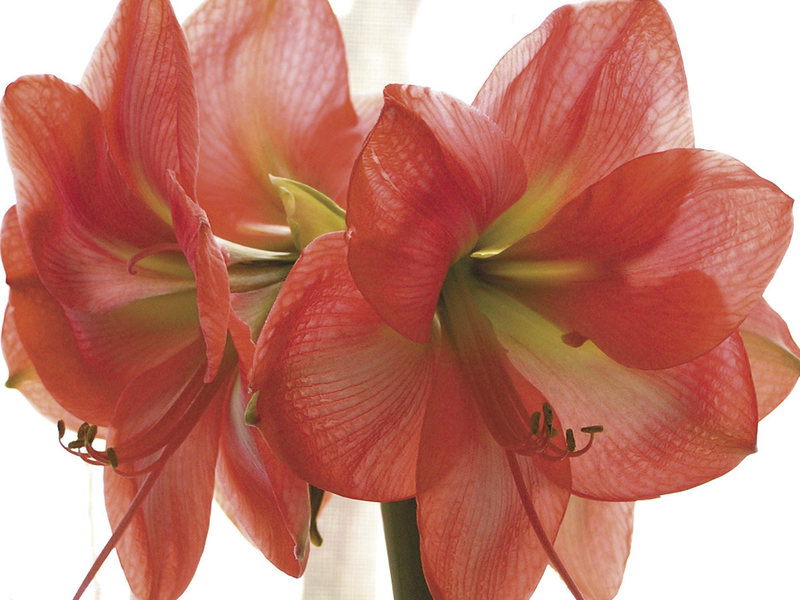The Pilgrims gave us Plymouth Rock, Thanksgiving and funny shoes with buckles, but they didn’t give us Christmas. Indeed, the Pilgrims could see no scriptural justification for celebrating Christmas, and saw how it was based upon earlier paganism and idolatry. Even Gov. William Bradford reprimanded offenders.
Slowly, Christmas crept into our homes and along with it Christmas plants. The plants’ green leaves contrasted nicely with the other color of the season, red for a living Christmas gift.
One of the showiest and easiest-to-grow Christmas plants is amaryllis with its vigor and shocking beauty. This South African native often appears fully potted or as a single huge bulb. If your amaryllis is not already planted in a pot, set it in rich soil in a heavy, 6- to 8-inch pot. Because of the weight of the bulb and the soon-to-be towering plant, avoid plastic or lightweight pots that may tip over. You can cluster several bulbs in a large pot or container for a dramatic display.
Amaryllis come in solid colors of red, salmon, pink, white, in stripes and even as fluffy double blooms. The delicate Appleblossom is pure white with a thin red outline on every petal.
Set the bulb, pointed end up, in the potting soil. You can add perlite or peat moss for better drainage. Always use fresh potting soil instead of dirt from the garden, because it will not drain properly. Gently firm the soil down around the bulb so about one-third of the bulb is sticking out above the potting soil.
Set your newly potted amaryllis in a sunny location such as a south-facing window or sunroom. Water sparingly so it doesn’t become waterlogged. Once you see a few inches of new growth, keep your plant well watered.
Turn the pot regularly so all sides get sunlight and the stalks grow straight. Some varieties of amaryllis will take longer to sprout, so be patient.
In just five to eight weeks, the stalks will burst into bloom with large, trumpet-shaped flowers. To keep the blooms from dying, keep your amaryllis well watered, but not soggy, away from drafts and in a sunny spot but out of direct sunlight. They do best when the temperature stays above 60F. Slightly higher temperatures of 70F to 80F are best.
You can get your amaryllis to bloom again next year with just a bit of care. After the flowers fade, cut the entire stalk down to within an inch of the top of the bulb.
Keep watering and feed your plant regularly with a diluted organic liquid houseplant fertilizer. Your amaryllis will sprout broad green leaves through the spring and summer. These leaves will build up energy for next year’s blooms. Around mid-August, cut back on the water so your bulb goes dormant. This rest period is essential. The leaves will now die back naturally, and the plant will send all of its energy down into the bulb.
Keep your dormant bulb in a cool, dry, dark place for at least eight weeks of rest. Check your calendar, and around five to eight weeks before you want your amaryllis bulb to bloom again, repot it in good, fresh potting soil. Start watering again, and just like when you first got the bulb, wait until you see about an inch of growth before you resume watering on a regular basis. Amaryllis are stunning cut flowers that last a long time in a vase. Cut the stems when the unopened buds are just starting to show some color. This means the other buds are mature enough to open. Cut the stems straight across to allow the stems to rest evenly in the vase. The stems are hollow and will eventually split or curl up, but this won’t affect the blossoms. Amaryllis flowers will last up to 10 days in a vase.
Pot up some amaryllis or bring one home from the store fully in bloom, and with a little care you can have a spectacular houseplant for years to come. Just don’t tell the Pilgrims.



















































